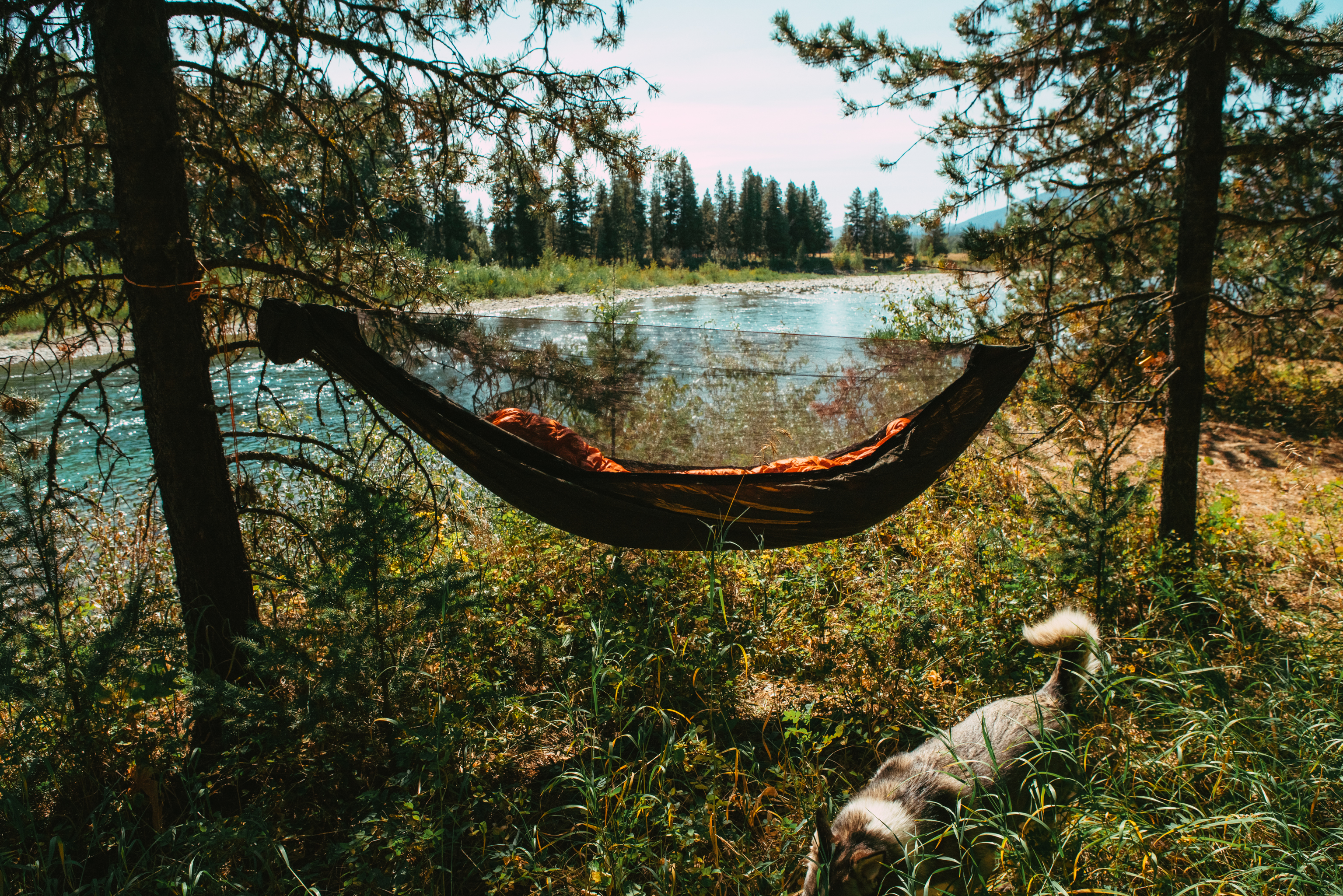When To Choose a Hammock Over a Tent

Hammock vs Tent is an age old conundrum, and when to choose which on any given backpacking trip is the subject we’ll be discussing today. Both have advantages and disadvantages, while also creating opportunities and limitations. So if you’re a ground-hang hybrid sleeper, please read on to help inform future decisions about when to pack which system. If you’ve come to this article having never slept in a hammock while backpacking, then it will be even more informative!
Generally speaking, experienced hangers tend to prefer the comfort of a hammock to that of a sleeping pad. This is because of the way hammocks wrap around you, distributing your weight more evenly than ground pads which focus pressure on only a few contact points, like the hips and shoulders. I’m a side sleeper when camping on the ground, so when lying on a backpacking sleeping pad, my shoulder almost always gets uncomfortable during the night. This never happens in a hammock. I could go on and on about how comfortable hammocks are, but for now, I will just assume that you are on board with my presumption that hammocks are comfier than sleeping pads.
Comfort aside, there are other reasons to choose a hammock. Consider their weight. A good quality basic hammock shelter system, like the Wanderlust Complete Kit For Hammock Camping, weighs less than all but the most modern, lightweight sleeping pad, bag and tent/shelter combos. But a premium hammock kit like The WanderLuxe can keep up with the best of ‘em. For instance, our Dyneema® Hex Tarp Hammock Shelter weighs only five ounces. So if you’re looking to cover some serious mileage, hammocks are a great option for reducing weight.
Consider also a hammock’s ability to allow you to camp virtually anywhere with trees. No longer are you beholden to pulling off at some junky old campsite just because you aren’t sure if you can make it to the next one before dark. If you’re in the forest, you can hike confidently knowing that the world is your oyster from which to hang (permits/rules allowing). You can also say goodbye to cramped, rooty, or rocky tent pads and noisy camp areas. Hammock sleepers are able to escape bad sites, migrating to the fringes of a campground. Large groups and crowded sites are both served best if some of their campers sleep in hammocks, better distributing what limited tent pads exist between fewer tent users.
As such, it follows that your default position for any trip should be that you are going to try to pack the hammock instead of the tent, all other factors being equal. This leaves the onus, or burden of proof, on tents, to show when they’re the better option. Phrased more simply; you don’t need a reason to camp in a hammock, you need a reason not to.
So when shouldn’t you? The good news is that it’s usually pretty obvious. First and foremost, are you in hammock-unfriendly terrain, like desert, alpine, or shrub steppe? Next up, consider the makeup and dynamic of your party, their gear, and your group objectives. Do you have a partner who wants or needs to share a tent? Are you unable to separate from your group to sleep solo (think kids, dogs, first-timers, or that special someone)? Is your objective to camp on summits, passes, or wherever the best possible views are? If your answer to any of the above questions was yes, you would be better served with a tent or an ultralight shelter, like our Dyneema® or SilPoly ground tarps. Also, if you plan to use our Burrow top quilt, be sure to bring along it's compatible Ground Pad Attachment Kit system to get an extra cozy night sleep on the ground.
Lastly, don’t forget about the weather, this is a very important factor to consider. Complete hammock camping setups with underquilts and full coverage tarps with doors, like the Palace or Journey, can handle any weather that three season tents can. But if you’re expecting heavy winds and precip, and don’t have a full coverage tarp, leave the hammock setup at home. As an aside, I think hammocks perform better than tents in heavy rain, because there is zero chance of water pooling underneath you and soaking through the floor, and because it’s comfier to be confined to a hammock than a tent.
To wrap this all up, we’d like to remind everyone how great it is to simply chill in a hammock when you get to camp. Truly, it’s a magical experience to behold. So when you’re trying to decide which shelter to bring, keep in mind that hammocks are comfier than tents, and that hammock shelter systems are just as light and protective as tents. All of those factors combined should make hammocks your default option, only to stray from on a case by case basis. Happy hanging!

